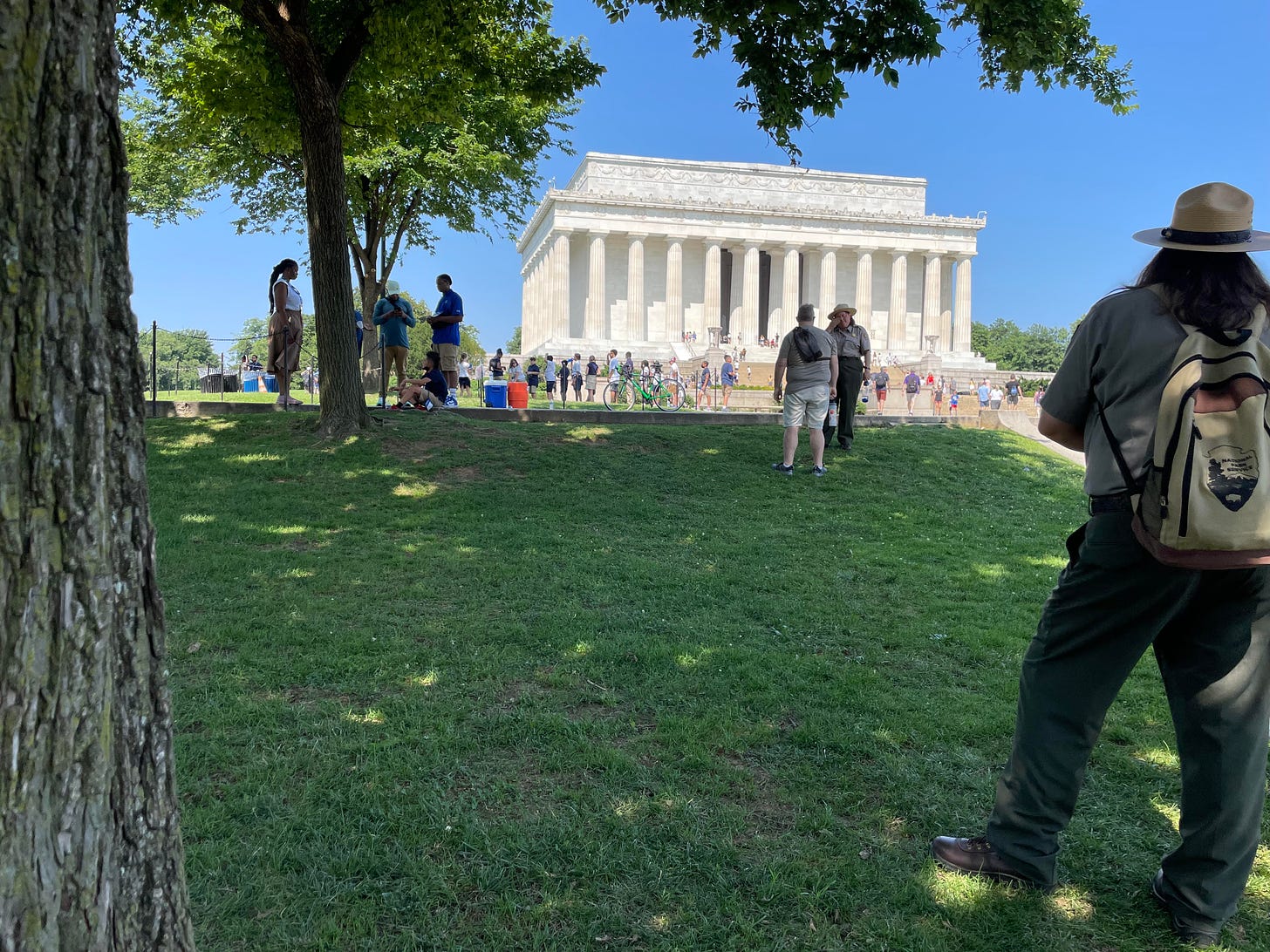Today our teachers visited Lincoln Park, just east of the Capitol Building, where I interpreted the Emancipation Memorial. I was relieved to see that the fences have been removed and visitors are once again able to appreciate this complicated and historically significant memorial.
But the highlight of the day for me was a tour led by National Park Service ranger Bethany Bagent at the Lincoln Memorial, which focused on how race and segregation shaped the ceremony and the responses from the African-American community.
The story that stood out to me involved Whitefield J. McKinlay, McKinlay was born in South Carolina and educated at the University of South Carolina during Reconstruction. He also served as a state legislator durng this period before pursuing a career in education and real estate.
McKinlay and his wife eventually moved to Washington, D.C. just as conditions were deteriorating for African Americans at the turn of the twentieth century. President William Howard Taft appointed McKinlay to the position of collector of customs in Georgetown—the first African American to be appointed to this position.
McKinlay and his wife were honored to be invited to the 1922 dedication of the Lincoln Memorial on the National Mall. Ranger Bagent did a wonderful job of highlighting the extent to which the themes of reunion and reconciliation dominated the dedication ceremony and specifically the speeches that were delivered that day. Union veterans were seated close to the front alongside Confederate veterans, but you can see that a few Black veterans were present as well.

That was the extent of the integrated seating during this ceremony.
The McKinlays arrived with green tickets for “Platform Section Five,” which would have placed him close to Taft, now a Supreme Court Justice, but he was quickly confronted by Lieutenant Colonel Clarence O. Sherrill and forced to move. Sherrill was born in Noth Carolina and was now in charge of logistics, including seating, for the Lincoln Memorial Commission. McKinlay and his wife were forced to move to a much more isolated position, approximately one block from the speaker’s podium.
The section included a few backless chairs and was surrounded by overgrown grass and weeds. When they arrived the officer told McKinlay to sit down. McKinlay was clearly upset and responded that he would think about it. Sherrill spat back, “Well you better think damned quick.”
Rather than be “Jim Crowed” in the nation’s capital, the McKinlays and roughly 30 other Black attendees decided to leave in protest.
President William G. Harding went out of this way in his dedication speech to deny that emancipation had anything to do with Lincoln’s legacy or the Lincoln Memorial specifically.
The union must be preserved. It was the central thought, the unalterable purpose, the unyielding intent, the foundation of faith. It was worth every sacrifice, justified every cost, steeled the heart to sanction every crimsoned tide of blood. Here was the great experiment—popular government and constitutional union— menaced by greed expressed in human chattels. With the greed restricted and unthreatened, he could temporize. When it challenged federal authority and threatened the union, it pronounced its own doom.
Harding was not entirely wrong in highlighting the importance of union to Lincoln and the vast majority of the loyal citizenry of the United States, but perhaps these words and the pull of national reunion also served to justify laws that undercut Black civil rights and guaranteed decades of second class status.
I very much appreciated Ranger Bagent’s closing remarks that involved highlighting one short passage from Harding’s speech:
This memorial, matchless tribute that it is, is less for Abraham Lincoln than for those of us today, and for those who follow after.
It would take the voice of Marian Anderson, the stirring words of Martin Luther King, Jr. and countless other acts of appropriation to fully dedicate the Lincoln Memorial for all Americans.





There is nothing quite like it, though. The closest vibe to the Lincoln Memorial I've ever encountered is the occasional huge, unexpected Buddha statue in Thailand or Vietnam. Not to say that Lincoln is a religious figure! But it's obvious that someone had a clear, solid, living-and-breathing presence in their mind when they created it, and mastered every detail.
Warren G. Harding, not William J.
Otherwise, great article! Sounds like it's been a great week so far.
Best
Rob